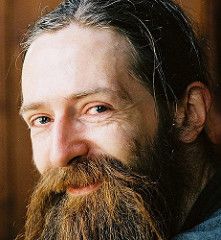(NOTE: Selecting the “Switch to White” button on the upper right-hand corner of the screen may ease reading this text).
“Who are you?” A simple question sometimes requires a complex answer. When a Homeric hero is asked who he is.., his answer consists of more than just his name; he provides a list of his ancestors. The history of his family is an essential constituent of his identity. When the city of Aphrodisias… decided to honor a prominent citizen with a public funeral…, the decree in his honor identified him in the following manner:
Hermogenes, son of Hephaistion, the so-called Theodotos, one of the first and most illustrious citizens, a man who has as his ancestors men among the greatest and among those who built together the community and have lived in virtue, love of glory, many promises of benefactions, and the most beautiful deeds for the fatherland; a man who has been himself good and virtuous, a lover of the fatherland, a constructor, a benefactor of the polis, and a savior.
– Angelos Chaniotis, In Search of an Identity: European Discourses and Ancient Paradigms, 2010
I realize many may not have the time to read all of this post — let alone the treatise it introduces — so for those with just a few minutes to spare, consider abandoning the remainder of this introduction and spending a few moments with a brief narrative which distills the very essence of the problem at hand: On the Origin of Mass Extinctions: Darwin’s Nontrivial Error.
But for those with the time and inclinations for long and windy paths through the woods, please allow me to introduce myself: I was born and raised in Kentland, Indiana, a few blocks from the train station where my great-great grandfather, Barney Funk, arrived from Germany, on Christmas day of 1859. I completed a BSc in Entrepreneurship and an MFA in film at USC, and an MA in Island Studies at UPEI. I am a naturalist, Fellow of The Linnean Society of London, PhD candidate in economics at the University of Malta, hunter & fisherman, NRA member, protective father, and devoted husband with a long, long line of illustrious ancestors, a loving mother & father, extraordinary brothers & sister, wonderful wife, beautiful son & daughter, courageous cousins, and fantastic aunts, uncles, in-laws, colleagues, and fabulous friends!
Thus my answer to the simple question, “Who are you?” requires a somewhat complex answer as well.
But time is short and I am well-positioned to simplify because all of the hats I wear fall under a single umbrella: I am a friend of the Lifeboat Foundation (where I am honoured to serve on the Human Trajectories, Economics, Finance, and Diplomacy Advisory Boards), a foundation “dedicated to encouraging scientific advancements while helping humanity survive existential risks.”
Almost everything I do – including the roles, associations, and relationships noted above, supports this mission.
It’s been nearly a year since Eric generously publish Principles of Economics & Evolution: A Survival Guide for the Inhabitants of Small Islands, Including the Inhabitants of the Small Island of Earth, and since that time I have been fortunate to receive many interesting and insightful emails packed full of comments and questions; thus I would like to take this opportunity to introduce this work – which represents three years of research.
Those interested in taking the plunge and downloading the file above may note that this discourse
tables an evolutionarily stable strategy for the problem of sustainable economic development – on islands and island-like planets (such as Earth), alike, and thus this treatise yields, in essence, a long-term survival guide for the inhabitants of Earth.
Thus you may expect a rather long, complex discourse.
This is indeed what you may find – a 121 page synthesis, including this 1,233 page Digital Supplement.
As Nassim Nicholas Taleb remarked in Fooled by Randomness:
I do not dispute that arguments should be simplified to their maximum potential; but people often confuse complex ideas that cannot be simplified into a media-friendly statement as symptomatic of a confused mind. MBAs learn the concept of clarity and simplicity—the five-minute manager take on things. The concept may apply to the business plan for a fertilizer plant, but not to highly probabilistic arguments—which is the reason I have anecdotal evidence in my business that MBAs tend to blow up in financial markets, as they are trained to simplify matters a couple of steps beyond their requirement.
But there is indeed a short-cut — in fact, there are at least two short-cuts.
First, perhaps the most direct pleasant approach to the summit is a condensed, 237 page thesis: On the Problem of Sustainable Economic Development: A Game-Theoretical Solution.
But for those pressed for time and/or those merely interested in sampling a few short, foundational works (perhaps to see if you’re interested in following me down the rabbit hole), the entire theoretical content of this 1,354-page report (report + digital supplement) may be gleamed from 5 of the 23 works included within the digital supplement. These working papers and publications are also freely available from the links below – I’ll briefly relate how these key puzzle pieces fit together:
The first publication offers a 13-page over-view of our “problem situation”: On the Origin of Mass Extinctions: Darwin’s Nontrivial Error.
Second is a 21-page game-theoretical development which frames the problem of sustainable economic development in the light of evolution – perhaps 70% of our theoretical content lies here: On the Truly Noncooperative Game of Life on Earth: In Search of the Unity of Nature & Evolutionary Stable Strategy.
Next comes a 113-page gem which attempts to capture the spirit and essence of comparative island studies, a course charted by Alexander von Humboldt and followed by every great naturalist since (of which, more to follow). This is an open letter to the Fellows of the Linnean Society of London, a comparative study of two, diametrically opposed economic development plans, both put into action in that fateful year of 1968 — one on Prince Edward Island, the other on Mustique. This exhaustive work also holds the remainder of the foundation for our complete solution to this global dilemma – and best of all, those fairly well-versed in game theory need not read it all, the core solution may be quickly digested on pages 25–51:
On the Truly Noncooperative Game of Island Life: Introducing a Unified Theory of Value & Evolutionary Stable ‘Island’ Economic Development Strategy.
Fourth comes an optional, 19-page exploration that presents a theoretical development also derived and illuminated through comparative island study (including a mini-discourse on methods). UPEI Island Studies Programme readers with the time and inclination for only one relatively short piece, this may be the one to explore. And, despite the fact that this work supports the theoretical content linked above, it’s optional because there’s nothing new here – in fact, these truths have been well known and meticulously documented for over 1,000 years – but it may prove to be a worthwhile, engaging, and interesting read nonetheless, because these truths have become so unfashionable that they’ve slipped back into relative obscurity: On the Problem of Economic Power: Lessons from the Natural History of the Hawaiian Archipelago.
And finally I’ll highlight another optional, brief communique – although this argument may be hopelessly compressed, here, in 3 pages, is my entire solution:
Truly Non-Cooperative Games: A Unified Theory.
Yes, Lifeboat Foundation family and friends, you may wish to pause to review the abstracts to these core, foundational works, or you may even wish to review them completely and put the puzzle pieces together yourself (the pages linked above total 169 – or a mere 82 pages if you stick to the core excerpt highlighted in my Linnean Letter), but, as the great American novelist Henry Miller remarked:
In this age, which believes that there is a short cut to everything, the greatest lesson to be learned is that the most difficult way is, in the long run, the easiest.
Why?
That’s yet another great, simple question that may require several complex answers, but I’ll give you three:
#1). First and foremost, because explaining is a difficult art.
As Richard Dawkins duly noted:
Explaining is a difficult art. You can explain something so that your reader understands the words; and you can explain something so that the reader feels it in the marrow of his bones. To do the latter, it sometimes isn’t enough to lay the evidence before the reader in a dispassionate way. You have to become an advocate and use the tricks of the advocate’s trade.
Of course much of this depends upon the reader – naturally some readers may find that less (explanation) is more. Others, however, may find benefit from reading even more (more, that is, than my report and the digital supplement). You may find suggested preliminary and complimentary texts in the SELECTED BIBLIOGRAPHY (below). The report itself includes these and many more. In short, the more familiar readers may be with some or all of these works, the less explaining they may require.
#2). No matter how much explaining you do, it’s actually never enough, and, as Abraham Lincoln wisely noted at Gettysburg, the work is never done. For more one this important point, let’s consider the words of Karl Popper:
When we propose a theory, or try to understand a theory, we also propose, or try to understand, its logical implications; that is, all those statements which follow from it. But this… is a hopeless task: there is an infinity of unforeseeable nontrivial statements belonging to the informative content of any theory, and an exactly corresponding infinity of statements belonging to its logical content. We can therefore never know or understand all the implications of any theory, or its full significance.
This, I think, is a surprising result as far as it concerns logical content; though for informative content it turns out to be rather natural…. It shows, among other things, that understanding a theory is always an infinite task, and that theories can in principle be understood better and better. It also shows that, if we wish to understand a theory better, what we have to do first is to discover its logical relation to those existing problems and existing theories which constitute what we may call the ‘problem situation’.
Admittedly, we also try to look ahead: we try to discover new problems raised by our theory. But the task is infinite, and can never be completed.
In fact, when it comes right down to it, my treatise – in fact, my entire body of research, is, in reality, merely an exploration of the “infinity of unforeseeable nontrivial statements belonging to the informative content” of the theory for which Sir Karl Popper is famous: his solution to David Hume’s problem of induction (of which you’ll hear a great deal if you brave the perilous seas of thought in the works introduced and linked herewith).
#3). Okay, this is a tricky one, but here it goes: Fine, a reasonable skeptic may counter, I get it, it’s hard to explain and there’s a lot of explaining to do – but if 100% of the theoretical content may be extracted from less than 200 pages, then doesn’t that mean you could cut about 1,000 pages?
My answer?
Maybe.
But then again, maybe not.
The reality of the situation is this: neither I nor anyone else can say for sure – this is known as the mind-body problem. In essence, given the mind-body problem, not only am I unable to know exactly how to explain something I know, moreover, I’m not even able to know how it is that I know what I know. I’m merely able to guess. Although this brief introduction is not the proper time nor place to explore the contents of this iteration of Pandora’s Box, those interested in a thorough exploration of this particular problem situation would be well-served with F.A. von Hayek’s The Sensory Order: An Inquiry into the Foundations of Theoretical Psychology (1952). But, in short, the bulk of the Digital Supplement and much of the report itself is merely an attempt to combat the mind-body problem – an attempt to put down as much of the history (and methodology) of this theoretical development as possible. As Descartes remarked at the outset of a treatise on scientific method:
This Tract is put forth merely as a history, or, if you will, as a tale, in which, amid some examples worthy of imitation, there will be found, perhaps, as many more which it were advisable not to follow, I hope it will prove useful to some without being hurtful to any, and that my openness will find some favor with all.
Perhaps you may grasp my theoretical development – but perhaps you may grasp it in a matter by which I did not intend for you to grasp it – perhaps I had stumbled upon a truth in another work within my digital supplement that may make it all clear. Or, perhaps I’ve got it all wrong, and perhaps you – by following in my footsteps through the historical course of this theoretical development (faithfully chronicled in the digital supplement) – may be able to help show me my error (and then, of course we may both rejoice); Malthus felt likewise:
If [the author] should succeed in drawing the attention of more able men to what he conceives to be the principal difficulty in… society and should, in consequence, see this difficulty removed, even in theory, he will gladly retract his present opinions and rejoice in a conviction of his error.
Anticipating another point regarding style: This report is very, very unusual insofar as style is concerned. It’s personal, highly opinionated, and indulges artistic license at almost every turn in the road. In fact, you may also find this narrative a touch artistic – yet it’s all true. As Norman Maclean remarked in A River Runs Trough It, “You like to tell true stories, don’t you?’ he asked, and I answered, ‘Yes, I like to tell stories that are true.’”
I like to tell stories that are true, too, and if you like to read them, then this epic journey of discovery may be for you. I speak to this point at length, but, in short, I submit that there is a method to the madness (in fact, the entire report may also be regarded as an unusual discourse on method).
Why have I synthesized this important theoretical development in an artistic narrative? In part, because Bruno Frey (2002) clearly stated why that’s the way it should be.
But I also did so in hopes that it may help readers grasp what it’s really all about; as the great Russian-American novelist Ayn Rand detailed:
Man’s profound need of art lies in the fact that his cognitive faculty is conceptual, i.e., that he acquires knowledge by means of abstractions, and needs the power to bring his widest metaphysical abstractions into his immediate, perceptual awareness. Art fulfills this need: by means of a selective re-creation, it concretizes man’s fundamental view of himself and of existence. It tells man, in effect, which aspects of his experience are to be regarded as essential, significant, important. In this sense, art teaches man how to use his consciousness.
Speaking of scientific method: I have suggested that my curiously creative narrative may offer some insight into the non-existent subject of scientific method — so please download for much more along these lines — but I want to offer an important note, especially for colleagues, friends, students, and faculty at UPEI: I sat in on a lecture last winter where I was surprised to learn that “island studies” had been recently invented by Canada research chair – thus I thought perhaps I should offer a correction and suggest where island studies really began:
Although it is somewhat well known that Darwin and Wallace pieced the theory of evolution together independently, yet at roughly the same time – Wallace, during his travels through the Malay archipelago, and Darwin, during his grand circumnavigation of the island of Earth onboard the Beagle (yes, the Galapagos archipelago played a key role, but perhaps not as important as has been suggested in the past). But what is not as commonly know is that both Darwin and Wallace had the same instructor in the art of comparative island studies. Indeed, Darwin and Wallace both traveled with identical copies of the same, treasured book: Alexander von Humboldt’s Personal Narrative of Travels to the Equinoctial Regions of the New Continent. Both also testified to the fundamental role von Humboldt played by inspiring their travels and, moreover, developing of their theories.
Thus, I submit that island studies may have been born with the publication of this monumental work in 1814; or perhaps, as Berry (2009) chronicled in Hooker and Islands (see SELECTED BIBLIOGRAPHY, below), it may have been Thomas Pennant or Georg Forster:
George Low of Orkney provided, together with Gilbert White, a significant part of the biological information used by pioneering travel writer Thomas Pennant, who was a correspondent of both Joseph Banks and Linnaeus [Pennant dedicated his Tour in Scotland and Voyage to the Hebrides (1774–76) to Banks and published Banks’s description of Staffa, which excited much interest in islands; Banks had travelled with James Cook and visited many islands; Georg Forster, who followed Banks as naturalist on Cook’s second voyage inspired Alexander Humboldt, who in turn Darwin treated as a model.
But whomever it may have been — or whomever you may ultimately choose to follow — Humboldt certainly towers over the pages of natural history, and Gerard Helferich’s Humboldt’s Cosmo’s: Alexander von Humboldt and the Latin American Journey that Changed the WayWe See the World (2004) tells Humboldt’s story incredibly well. This treasure also happens to capture the essence of Humboldt’s method, Darwin’s method, Wallace’s method, Mayr’s method, Gould’s method, and it most certainly lays out the map I have attempted to follow:
Instead of trying to pigeonhole the natural world into prescribed classification, Kant had argued, scientists should work to discover the underlying scientific principles at work, since only those general tenets could fully explain the myriad natural phenomena. Thus Kant had extended the unifying tradition of Thales, Newton, Descartes, et al.… Humboldt agreed with Kant that a different approach to science was needed, one that could account for the harmony of nature… The scientific community, despite prodigious discoveries, seemed to have forgotten the Greek vision of nature as an integrated whole.… ‘Rather than discover new, isolated facts I preferred linking already known ones together,’ Humboldt later wrote. Science could only advance ‘by bringing together all the phenomena and creations which the earth has to offer. In this great sequence of cause and effect, nothing can be considered in isolation.’ It is in this underlying connectedness that the genuine mysteries of nature would be found. This was the deeper truth that Humboldt planned to lay bare – a new paradigm from a New World. For only through travel, despite its accompanying risks, could a naturalist make the diverse observations necessary to advance science beyond dogma and conjecture. Although nature operated as a cohesive system, the world was also organized into distinct regions whose unique character was the result of all the interlocking forces at work in that particular place. To uncover the unity of nature, one must study the various regions of the world, comparing and contrasting the natural processes at work in each. The scientist, in other words, must become an explorer.
With these beautiful words in mind and the spirit of adventure in the heart, I thank you for listening to this long story about an even longer story, please allow me to be your guide through an epic adventure.
But for now, in closing, I’d like to briefly return to the topic at hand: human survival on Earth.
A few days ago, Frenchman Alain Robert climbed the world’s tallest building – Burj Khalifa – in Dubai.
After the six hour climb, Robert told Gulf News, “My biggest fear is to waste my time on earth.”
I certainly share Robert’s fear – Alexander von Humboldt, Darwin, and Wallace did, too, by the way.
But then Robert added, “To live, we don’t need much, just a roof over our heads some food and drink and that’s it … everything else is superficial.”
I’m afraid that’s where Robert and I part ways – and if you would kindly join me on a journey through The Principles of Economics & Evolution: A Survival Guide for the Inhabitants of Small Islands, Including the Inhabitants of the Small Island of Earth – I would love to explain why Robert’s assertion is simply not true.
Please feel free to post comments or contact me with any thoughts, comments, questions, or suggestions.
MWF
Charlottetown, Prince Edward Island
PS: My report suggests many preliminary and complimentary readings – but I’ve revisited this topic with the aim of producing a selected bibliography of the most condensed and readily accessible (i.e, freely available online) works which may help prepare the reader for my report and the foundational theoretical discourses noted and linked above. Most are short papers, but a few great books and dandy dissertations may be necessary as well!
SELECTED BIBLIOGRAPHY
BERRY, R. (2009). Hooker and islands. Bio Journal Linn Soc 96:462–481.
DARWIN, C., WALLACE, A. (1858). On the Tendency of Species to form Varieties; and on the Perpetuation of Varieties and Species by Natural Means of Selection. Proc Linn Soc 3:45–62.
DARWIN, C., et. al. (1849). A Manual of Scientific Enquiry; Prepared for the use of Her Majesty’s Navy : and Adapted for Travellers in General (Murray, London).
DOBZHANSK Y, T. (1973). Nothing in biology makes sense except in light of evolution. Amer Biol Teacher 35:125- 129.
EINSTEIN, A. (1920). Relativity: The Special and General Theory (Methuen & Co., London).
FIELDING, R. (2010). Artisanal Whaling in the Atlantic: A Comparative Study of Culture, Conflict, and Conservation in St. Vincent and the Faroe Islands. A PhD dissertation (Louisiana State University, Baton Rouge).
FREY, B. (2002). Publishing as Prostitution? Choosing Between One‘s Own Ideas and Academic Failure. Pub Choice 116:205–223.
FUNK, M. (2010a). Truly Non-Cooperative Games: A Unified Theory. MPRA 22775:1–3.
FUNK, M. (2008). On the Truly Noncooperative Game of Life on Earth: In Search of the Unity of Nature & Evolutionary Stable Strategy. MPRA 17280:1–21.
FUNK, M. (2009a). On the Origin of Mass Extinctions: Darwin’s Nontrivial Error. MPRA 20193:1–13.
FUNK, M. (2009b). On the Truly Noncooperative Game of Island Life: Introducing a Unified Theory of Value & Evolutionary Stable ‘Island’ Economic Development Strategy. MPRA 19049:1–113.
FUNK, M. (2009c). On the Problem of Economic Power: Lessons from the Natural History of the Hawaiian Archipelago. MPRA 19371:1–19.
HELFERICH, G. (2004). Humboldt’s Cosmo’s: Alexander von Humboldt and the Latin American Journey that Changed the Way We See the World (Gotham Books, New York).
HOLT, C., ROTH, A. (2004). The Nash equilibrium: A perspective. Proc Natl Acad Sci USA 101:3999–4000.
HAYEK, F. (1974). The Pretense of Knowledge. Nobel Memorial Lecture, 11 December 1974. 1989 reprint. Amer Econ Rev 79:3–7.
HUMBOLDT, A., BONPLAND, A. (1814). Personal Narrative of Travels to the Equinoctial Regions of the New Continent (Longman, London).
KANIPE, J. (2009). The Cosmic Connection: How Astronomical Events Impact Life on Earth (Prometheus, Amherst).
MAYNARD SMITH, J. (1982). Evolution and the Theory of Games (Cambridge Univ, New York).
MAYR, E. (2001). What Evolution Is (Basic Books, New York).
NASH, J., et., al. (1994). The Work of John Nash in Game Theory. Prize Seminar, December 8, 1994 (Sveriges Riksbank, Stockholm).
NASH, J. (1951). Non-Cooperative Games. Ann Math 54:286–295.
NASH, J. (1950). Two-Person Cooperative Games. RAND P-172 (RAND, Santa Monica).
POPPER, K. (1999). All life is Problem Solving (Routledge, London).
POPPER, K. (1992). In Search of a Better World (Routledge, London).
ROGERS, D., EHRLICH, P. (2008). Natural selection and cultural rates of change. Proc Natl Acad Sci USA 105:3416 −3420.
SCHWEICKART, R., et. al. (2006). Threat Mitigation: The Gravity Tractor. NASA NEO Workshop, Vail, Colorado.
SCHWEICKART, R., et. al. (2006). Threat Mitigation: The Asteroid Tugboat. NASA NEO Workshop, Vail, Colorado.
STIGLER, G. (1982). Process and Progress of Economics. J of Pol Econ 91:529–545.
TALEB, N. (2001). Fooled by Randomness (Texere, New York).
WEIBULL, J. (1998). WHAT HAVE WE LEARNED FROM EVOLUTIONARY GAME THEORY SO FAR? (Stockholm School of Economics, Stockholm).
WALLACE, A. (1855). On the Law Which has Regulated the Introduction of New Species. Ann of Nat History 16:184–195.






 The summer 2010 “
The summer 2010 “ Also speaking at the H+ Summit @ Harvard is
Also speaking at the H+ Summit @ Harvard is 